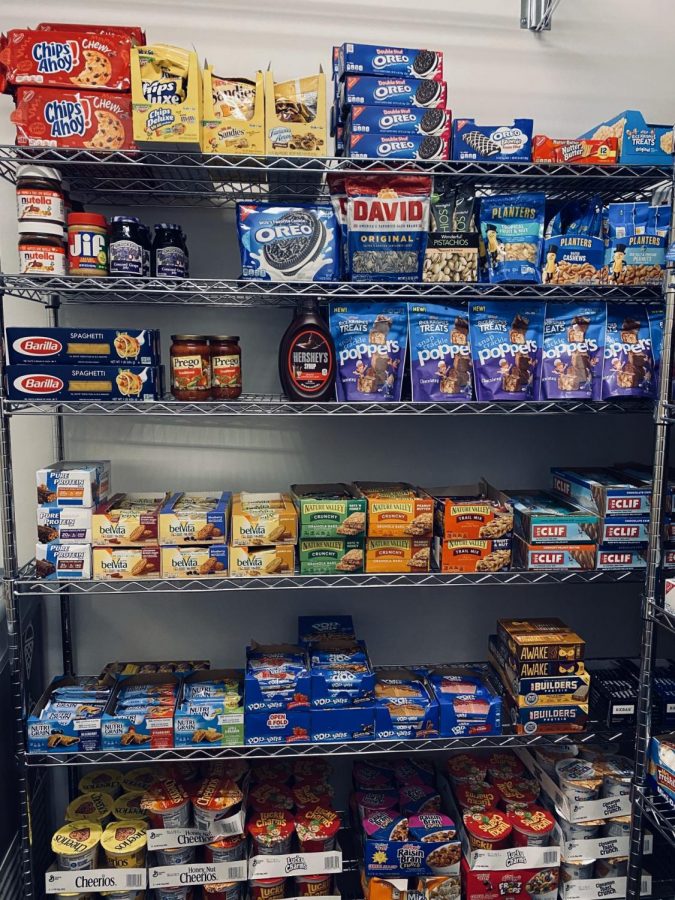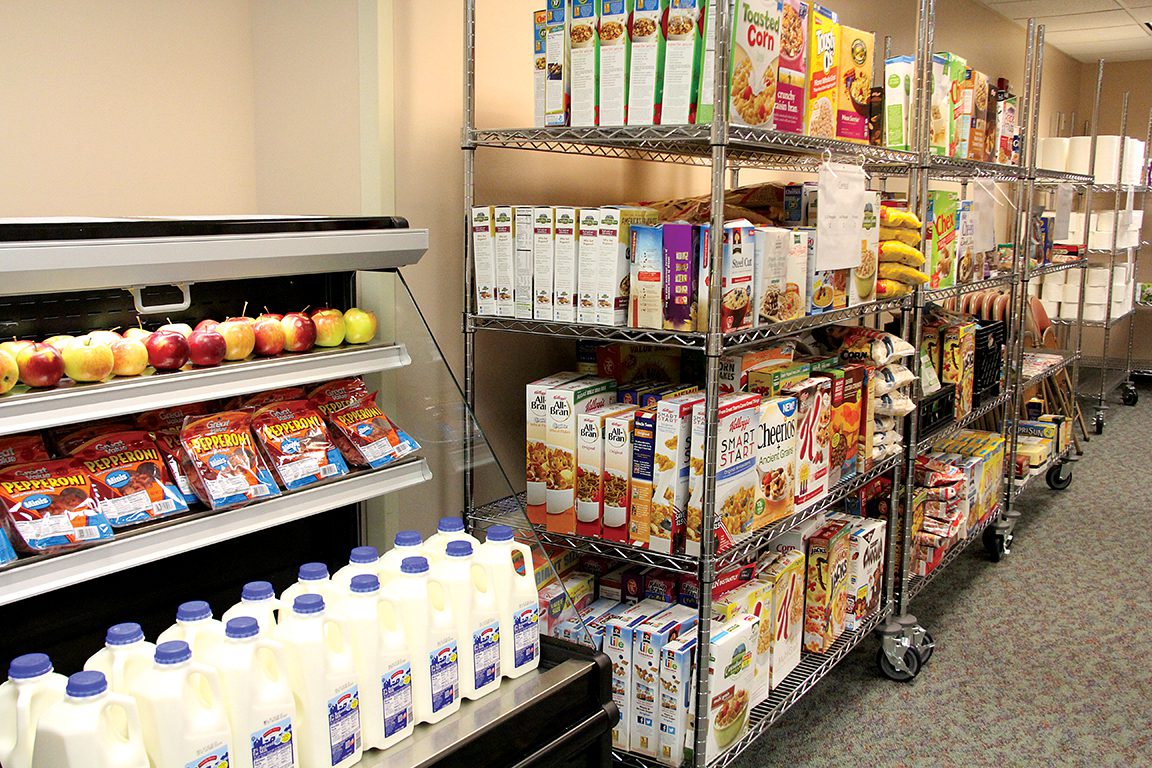Discover Ways to Contribute and Support a Food Kitchen Near You
Sustaining a food cupboard in your community can be a transformative experience, not just for those in demand yet also for those that choose to contribute. By understanding the certain demands of regional kitchens, you can customize your efforts to make a much more significant influence. Whether via food donations, offering, or financial backing, each action plays a vital duty in attending to food insecurity. As you consider your choices, there are a number of reliable techniques that can improve your contribution and foster community engagement-- each with its own distinct benefits waiting to be explored.
Understand Food Cupboard Demands
Recognizing the varied requirements of food cupboards is necessary for effective payments. Food kitchens serve as crucial resources within neighborhoods, addressing food insecurity among family members and people.
Numerous food cupboards prioritize non-perishable products such as canned items, pasta, and rice, as these items have longer shelf lives and can be dispersed over time. Furthermore, some cupboards might require personal treatment items, like toiletries and hygiene products, which are usually ignored however are essential for maintaining self-respect among receivers.
Moreover, understanding seasonal demands can also enhance contributions. As an example, throughout cooler months, pantries might look for donations of warm garments or blankets, while fresh produce is frequently extra in need throughout the summer. Engaging with pantry agents can provide valuable insights into their current demands, ensuring that payments are impactful and appropriate. By lining up donations with the particular demands of food cupboards, contributors can substantially boost the performance of their support, inevitably cultivating a more powerful and a lot more durable community.
Kinds of Food Donations
Food kitchens frequently receive a variety of food contributions, each type playing a vital role in satisfying the varied requirements of their clients. Non-perishable items, such as canned items, pasta, rice, and dried beans, are staples as they have a long life span and can be saved quickly. These items are crucial for producing well balanced meals and are usually the backbone of food kitchen offerings.
Perishable food contributions, including fresh fruits, vegetables, milk products, and healthy proteins like meat and eggs, are also very useful. These things offer crucial nutrients and variety, though they call for careful handling and punctual distribution to make sure safety and quality.
Additionally, some food kitchens approve ready meals, which can be especially useful for customers dealing with prompt food insecurity. Contributions of cooking beverages, ingredients, and treats can improve the offerings and provide convenience items.
Finally, specialty food things, such as gluten-free, vegan, or culturally specific products, provide to diverse dietary demands within the neighborhood. Food Pantry Lockhart. By recognizing the types of food contributions that can be made, contributors can much better sustain their local food pantries and the individuals they serve
Volunteering Opportunities Available
Offering at a food kitchen uses a purposeful method to contribute to the fight versus cravings in the area. Food pantries often depend on volunteers to assist with numerous tasks, making certain that procedures run efficiently and effectively. Opportunities for participation are diverse, satisfying individuals with various abilities and time commitments.
Typical volunteering roles consist of sorting and organizing food contributions, preparing food packages for circulation, and helping clients throughout their brows through. In addition, volunteers may assist with management jobs, such as data access or outreach initiatives to elevate understanding about the cupboard's solutions. Some food kitchens additionally provide opportunities to lead instructional workshops, concentrating on nutrition or cooking abilities for clients.
Volunteers can generally pick their hours, making it easier to fit this fulfilling infiltrate hectic routines. Lots of pantries welcome teams, enabling friends, household, or colleagues to participate in social work together, fostering a feeling of teamwork and common read purpose.
Financial Contributions and Sponsorship
Sustaining a food pantry with financial contributions and sponsorships can considerably intensify its effect on the area. Monetary contributions supply food pantries with the versatility to purchase vital things wholesale, making sure that they can satisfy the details demands of their clientele. Unlike food drives, where the type and amount of items can be unpredictable, economic support enables cupboards to strategically intend their inventory and react promptly to changing demands.
Sponsorships can also play a vital duty in boosting a food cupboard's resources. Organizations and businesses can partner with neighborhood food banks to money certain programs, such as dietary education and learning initiatives or special holiday circulations. This not just gives financial backing but additionally constructs community awareness and engagement.
Furthermore, lots of food pantries are recognized as tax-exempt organizations, allowing contributors to claim tax obligation reductions on their payments. This economic motivation can encourage raised offering, better reinforcing the cupboard's abilities to offer those in demand. Inevitably, economic payments and sponsorships like it are crucial to sustaining the procedures of food cupboards, guaranteeing they can proceed to supply vital support to susceptible populations in their communities.

Organizing Neighborhood Food Drives
Organizing area food drives can be an effective means to collect crucial supplies for local food pantries while cultivating a spirit of partnership among citizens. To effectively launch a food drive, start by determining a target day and place that will certainly be hassle-free for individuals. Team up with regional services, institutions, and neighborhood companies to assist advertise the occasion and urge bigger engagement.
Following, choose the sorts of food products needed, prioritizing non-perishable products such as canned veggies, pasta, and rice. Food Pantry Lockhart. Plainly interact these requirements to prospective donors via leaflets, social media sites, and area bulletin board system. Setting certain goals, such find as a target variety of things to gather, can inspire participants and produce a sense of urgency

Conclusion

Sustaining local food kitchens is essential for dealing with food insecurity within areas. By actively getting involved in these initiatives, neighborhoods can work together to make certain that food kitchens continue to be fully equipped to offer those in need.
Whether with food contributions, volunteering, or economic support, each action plays an essential function in dealing with food insecurity. Food kitchens offer as vital sources within areas, addressing food insecurity amongst individuals and households.Food pantries frequently obtain a variety of food donations, each kind playing a critical function in satisfying the varied requirements of their customers.Organizing area food drives can be an effective way to gather necessary supplies for neighborhood food pantries while fostering a spirit of partnership among citizens.Sustaining regional food kitchens is critical for addressing food insecurity within communities.